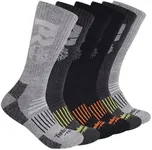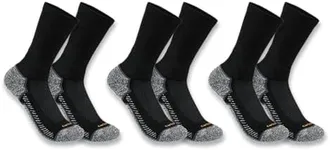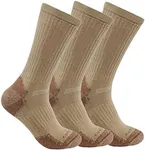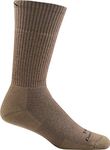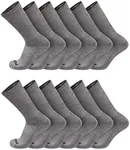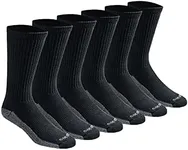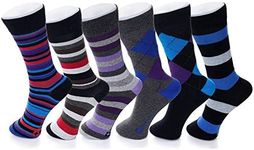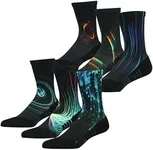Buying Guide for the Best Work Boot Socks
Choosing the right work boot socks is essential for comfort, support, and durability during long hours on your feet. The right pair can prevent blisters, keep your feet dry, and provide the necessary cushioning. When selecting work boot socks, consider the material, cushioning, fit, and additional features that cater to your specific needs and work environment.MaterialThe material of work boot socks is crucial for comfort and durability. Common materials include cotton, wool, and synthetic blends. Cotton is breathable but may not wick moisture well, making it less ideal for sweaty feet. Wool is excellent for temperature regulation and moisture-wicking but can be more expensive. Synthetic blends often combine the best properties of both, offering moisture-wicking, durability, and comfort. Choose a material based on your work environment and personal comfort preferences.
CushioningCushioning in work boot socks provides extra comfort and reduces foot fatigue. Socks can have light, medium, or heavy cushioning. Light cushioning is suitable for those who prefer a more minimal feel and have well-cushioned boots. Medium cushioning offers a balance of comfort and support, ideal for most work environments. Heavy cushioning provides maximum comfort and is best for extremely long hours or rugged conditions. Select the level of cushioning based on the intensity of your work and the comfort of your boots.
FitThe fit of work boot socks affects comfort and performance. A good fit ensures that the socks stay in place and do not bunch up, which can cause blisters. Look for socks with a snug fit around the arch and ankle, and ensure they are the right size for your feet. Some socks offer compression features that improve circulation and reduce fatigue. Choose a fit that feels secure but not too tight, considering the shape of your feet and the type of work boots you wear.
Moisture-WickingMoisture-wicking properties are important for keeping your feet dry and preventing blisters. Socks with good moisture-wicking capabilities draw sweat away from your skin and allow it to evaporate. This is particularly important if you work in hot or humid conditions. Look for socks made from materials like merino wool or synthetic fibers designed for moisture management. Choose moisture-wicking socks if you tend to have sweaty feet or work in environments where your feet are likely to get wet.
DurabilityDurability is a key factor for work boot socks, as they need to withstand the wear and tear of daily use. Reinforced heels and toes, as well as high-quality materials, contribute to the longevity of the socks. Consider socks with additional features like double stitching or extra padding in high-wear areas. Choose durable socks if you work in demanding environments or want to ensure your socks last longer without developing holes or thinning out.
Temperature RegulationTemperature regulation is important for maintaining comfort in varying work conditions. Some socks are designed to keep your feet warm in cold environments, while others are made to keep them cool in hot conditions. Wool and certain synthetic materials are good for temperature regulation, as they can adapt to different temperatures. Choose socks with temperature-regulating properties based on the climate you work in and your personal comfort needs.


